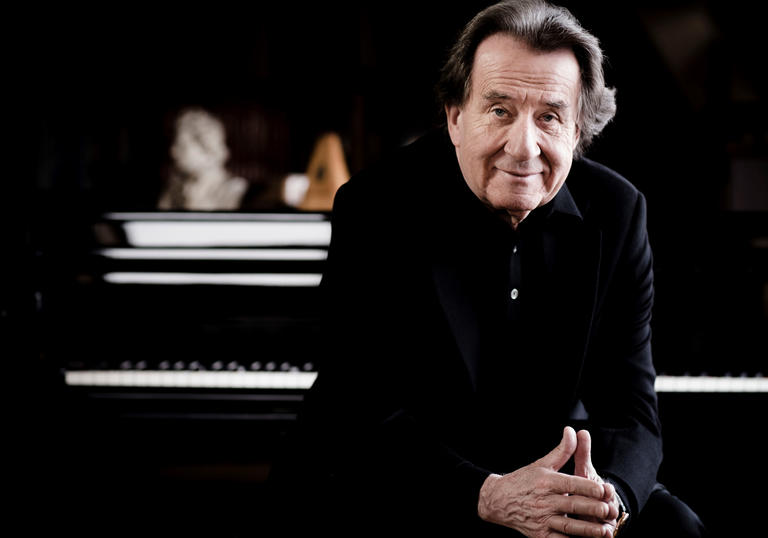The year 1885 was a pivotal one for the 21-year-old Richard Strauss. He first met violinist and composer Alexander Ritter, who encouraged him to explore the pioneering music of Wagner and Liszt. By the end of the year, following the surprise departure of eminent conductor Hans von Bülow, Strauss found himself at the helm (temporarily) of one of Germany’s finest musical ensembles, the Meiningen Court Orchestra.
It was also the year in which he travelled to Frankfurt with his mentor von Bülow to experience Paul Heyse’s drama Don Juans Ende. The play about the notorious Spanish womaniser no doubt struck a chord. Around the same time, Strauss was involved in a tempestuous affair with a married woman, and in 1887 he first met the woman with whom he’d spend the rest of his life – soprano Pauline de Ahna, who became Strauss’s wife in 1894.
In the end, however, it wasn’t from Heyse’s play but from an 1844 verse drama by Austrian poet Nikolaus Lenau that Strauss took direct inspiration for his tone poem Don Juan. He began it in 1888, fired with enthusiasm – following Ritter’s encouragements – for a new, liberating way of composing, one inspired by literature or even philosophy, and one that revelled in vivid storytelling. Indeed, the audience at Don Juan’s 1889 Weimar premiere were scandalised by the graphic nature of Strauss’s musical depiction of the infamous libertine. It leaves little to the imagination, and it catapulted the composer to international fame.
The Don himself rushes onto the stage in the hope of sexual conquest in the dashing opening theme, and we later encounter one of the many objects of his desire in a tender violin solo. A wild central development section depicts a masked ball from Lenau’s play, though it sounds more like an orgiastic free-for-all. Strauss ends his piece more solemnly, however: Don Juan fights Don Pedro, son of a man he killed in a duel, but exhausted by his unquenchable desires, casts his sword aside and allows Don Pedro to run him through.
It was in 1885, too, that Strauss began his Burleske, though in many ways the piece looks back to his earlier music, created before Ritter encouraged his career-defining embrace of more pioneering ideas. Strauss later referred to this period as his ‘Brahmsschwärmerei’ (or ‘crush on Brahms’): though he was decidedly cool about the elder composer’s music later in his life, as a young man he was a passionate advocate, paying most overt tribute in his Burleske.
Strauss wrote the piece in the hope that von Bülow might be its soloist in Meiningen, but his mentor told him it was too unconventional, and virtually unplayable. Set aside for a few years, the Burleske was eventually premiered by (and dedicated to) Eugen d’Albert, a former pupil of Liszt. The composer never assigned it an opus number, and didn’t allow its publication until 1894. But he clearly retained an affection for the piece, even including it in what would be the final concert he conducted, at London’s Royal Albert Hall in 1947.
The Burleske opens – very unusually – with solo timpani, playing a figure that generates much of the single-movement work’s subsequent music. There’s plenty of Lisztian bravado to the piano’s exuberant first theme, though the soloist moves into slower, calmer music in the more overtly Brahmsian second theme. Both themes return after a stormy central development section, and Strauss makes a cheeky reference to Wagner’s Tristan und Isolde in his showy solo cadenza. In the end, though, the Burleske dissipates into thin air, and Strauss leaves the final word to (what else?) the timpani.
We jump forward just 11 years from 1885, to 1896, to discover an entirely transformed Strauss in tonight’s closing piece. Aged 32, he was already considered the leading German composer of his day, with a string of orchestral showpieces behind him that vividly conveyed the stories of Macbeth, Till Eulenspiegel and Don Juan (as we heard earlier). Now, however, he turned from storytelling to philosophy.
Written between 1883 and 1885, Also sprach Zarathustra (‘Thus spoke Zarathustra’) is Friedrich Nietzsche’s fictionalised reimagining of the life of the founder of Zoroastrianism: after years alone on a mountaintop, he descends to deliver his wisdom to humankind. Though Strauss was cagey about whether he’d really attempted to convey Nietzsche’s thorny philosophical musings on faith, nature and superhuman attainment in music, he nonetheless lifted several of the book’s chapter titles as headings for the sections of his work.
We begin with possibly the most famous opening in all music, indelibly associated with Kubrick’s 1968 film 2001: A Space Odyssey. Strauss’s ‘Sunrise’ depicts the glorious beginning to the day that Zarathustra will descend to impart his wisdom. It also introduces Strauss’s ‘world riddle’ motif, the grand, rising trumpet figure heard at the very start, which returns again and again to symbolise inscrutable nature.
A horn call representing humankind, answered by a hymn-like string passage, begins ‘Of the Backworldsmen’, Strauss’s depiction of our desire for a spiritual world beyond our own, while nature reasserts itself through the ‘world riddle’ motif’s return in ‘Of the Great Yearning’. The swirling, tempestuous music in ‘Of Joys and Passions’ portrays the primal passions that Nietzsche argued humankind should embrace, while the pensive violin solo in ‘The Song of the Grave’ is a lament for the lost idealism of youth. Strauss transforms his ‘world riddle’ theme into an elaborate fugue in ‘Of Learning’, though ‘The Convalescent’, in which the ‘world riddle’ motif finally triumphs over humankind’s science, marks Zarathustra’s attainment of understanding following illness.
‘The Dance Song’ invites us into a world of glittering Viennese waltzes: it’s a section that disconcerted many early listeners, but perhaps points to humankind in harmony with nature (listen out for the ‘world riddle’ motif in its bassline). A midnight bell announces the final section, ‘Song of the Night Wanderer’, whose closing dissonance may indicate that Zarathustra’s – and humankind’s – ultimate riddle will forever remain unsolved.
© David Kettle

